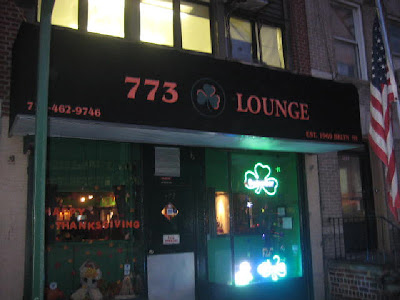It's Landmarks Commission Article Season

Not only did the New York Post look at the landmarks problem in New York in a big way this weekend, so did the New York Times, wrestling the hot topic in three big articles by Robin Pogrebin. The first, published Nov. 26, was titled "PRESERVING THE CITY; An Opaque and Lengthy Road to Landmark Status"; the second, published Nov. 28, was "Preservationists See Bulldozers Charging Through a Loophole"; and the third, published Nov. 30, was "Houses of Worship Meet Landmarking Bureaucracy."
It was the second of the series that struck me the hardest. Read:
Hours before the sun came up on a cool October morning in 2006, people living near the Dakota Stables on the Upper West Side were suddenly awakened by the sound of a jackhammer.
Soon word spread that a demolition crew was hacking away at the brick cornices of the stables, an 1894 Romanesque Revival building, on Amsterdam Avenue at 77th Street, that once housed horses and carriages but had long served as a parking garage.
In just four days the New York City Landmarks Preservation Commission was to hold a public hearing on pleas dating back 20 years to designate the low-rise building, with its round-arched windows and serpentine ornamentation, as a historic landmark.
But once the building’s distinctive features had been erased, the battle was lost. The commission went ahead with its hearing, but ultimately decided not to designate the structure because it had been irreparably changed. Today a 16-story luxury condominium designed by Robert A. M. Stern is rising on the site: the Related Companies is asking from $765,000 for a studio to $7 million or more for a five-bedroom unit in the building.
The strategy has become wearyingly familiar to preservationists. A property owner — in this case Sylgar Properties, which was under contract to sell the site to Related — is notified by the landmarks commission that its building or the neighborhood is being considered for landmark status. The owner then rushes to obtain a demolition or stripping permit from the city’s Department of Buildings so that notable qualities can be removed, rendering the structure unworthy of protection.
“In the middle of the night I’m out there at 2 in the morning, and they’re taking the cornices off,” said Gale Brewer, a city councilwoman who represents that part of the Upper West Side. “We’re calling the Buildings Department, we’re calling Landmarks. You get so beaten down by all of this. The developers know they can get away with that.”
And this:
Safeguards crumble because the landmarks commission and the buildings department lack an established system of communication, and commissioners often are unaware that permits have been issued. There is also no set procedure by which the buildings department alerts the commission when someone seeks a permit to strip off architectural detail.
Some City Council members are determined to change that. Tony Avella, who represents northeastern Queens, has introduced a bill that would require the buildings department not only to withhold demolition permits but also to suspend existing ones and issue a stop-work order when the commission schedules a hearing to consider landmark status for a structure.
Another bill, proposed by Rosie Mendez, a city councilwoman representing the Lower East Side and the East Village, would require the commission to notify the buildings department as soon as a property comes under consideration, even if a hearing has not been scheduled. The department would then alert the commission if an owner applied for a work permit. Both bills are wending their way through the council.
A school in Ms. Mendez’s East Village neighborhood galvanized her to introduce the bill. In June 2006 the landmarks commission designated former Public School 64, a French Renaissance Revival building on East Ninth Street near Tompkins Square Park, as a landmark over the objections of its owner, Gregg Singer.
After that designation, Mr. Singer used an alteration permit that had been granted in 2003 and stripped the terra-cotta elements and copper cornices from the building’s exterior. This month a State Supreme Court judge in Manhattan upheld the school’s designation as a landmark despite the architectural changes. But the damage remains.
Robert B. Tierney, the Landmarks Commissioner—who declined a budget increase in 2007 of $750,000 approved by the City Council, and earns an annual city salary of $177,698 for his crimes—must be removed. Now. That much is clear. If ever a man did not understand the nature or importance of his job, it's he.
























































